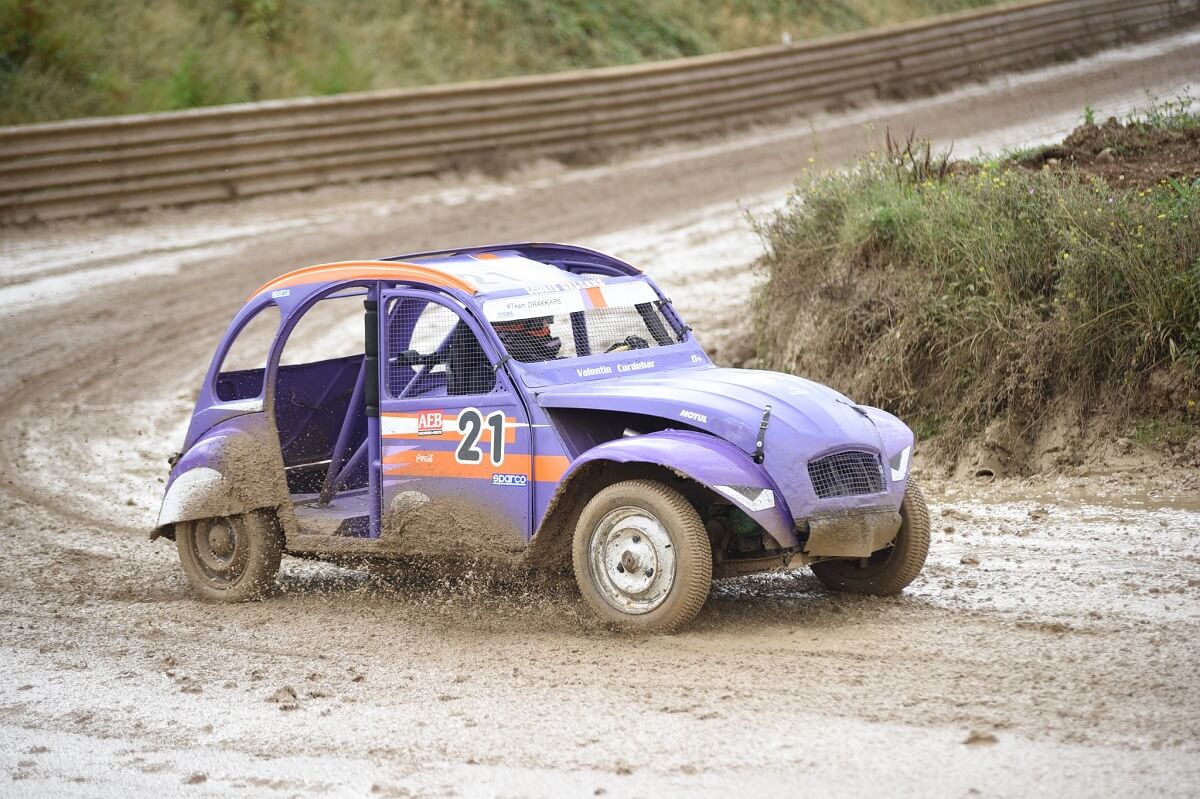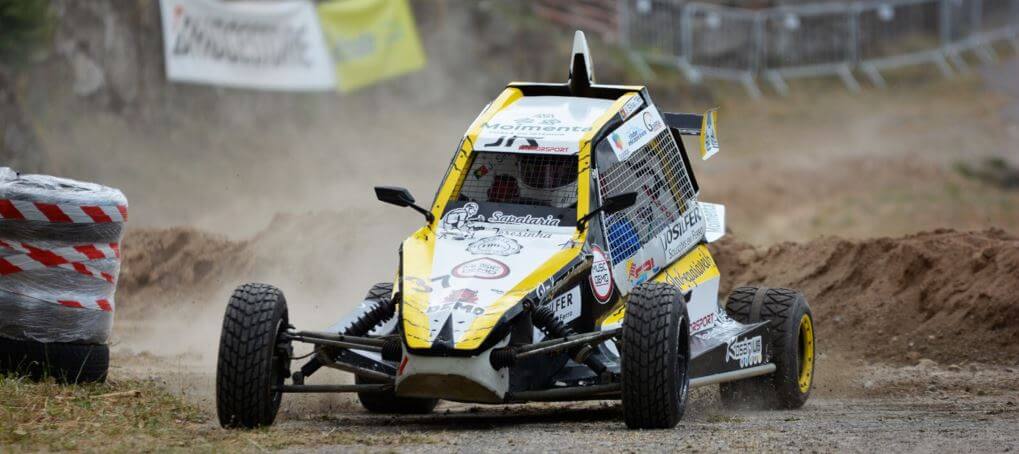All you need to know about Autocross and Sprint Car in France
By RobinB on 01 July 2025 Kartcross / AutocrossIn the French world of 100% dirt track motorsport, autocross holds a unique place: the same weekend brings together extensively prepared touring cars, single-seater buggies with tubular chassis, and the Sprint Cars family (Cross Cars in FIA terms), those mini-prototypes powered by motorcycle engines 🤩
Since the 1960s, the recipe has remained the same: mass starts, constantly adjusted racing lines on a surface that deteriorates lap after lap, and technical freedom that fuels workshop creativity.
Under the aegis of the FFSA — via the OFAC (Organisation Française Autocross & Sprintcar) at the national level and four major regional challenges (CORAC, SEAC, Challenge de l’Ouest, ORNEC) — more than forty official meetings are on the 2025 calendar. Adding the UFOLEP dirt pursuit events easily brings the tally past one hundred gatherings. From March to October, just as many opportunities to hear the buggies roar and to enjoy the raw art of dirt driving 🔥
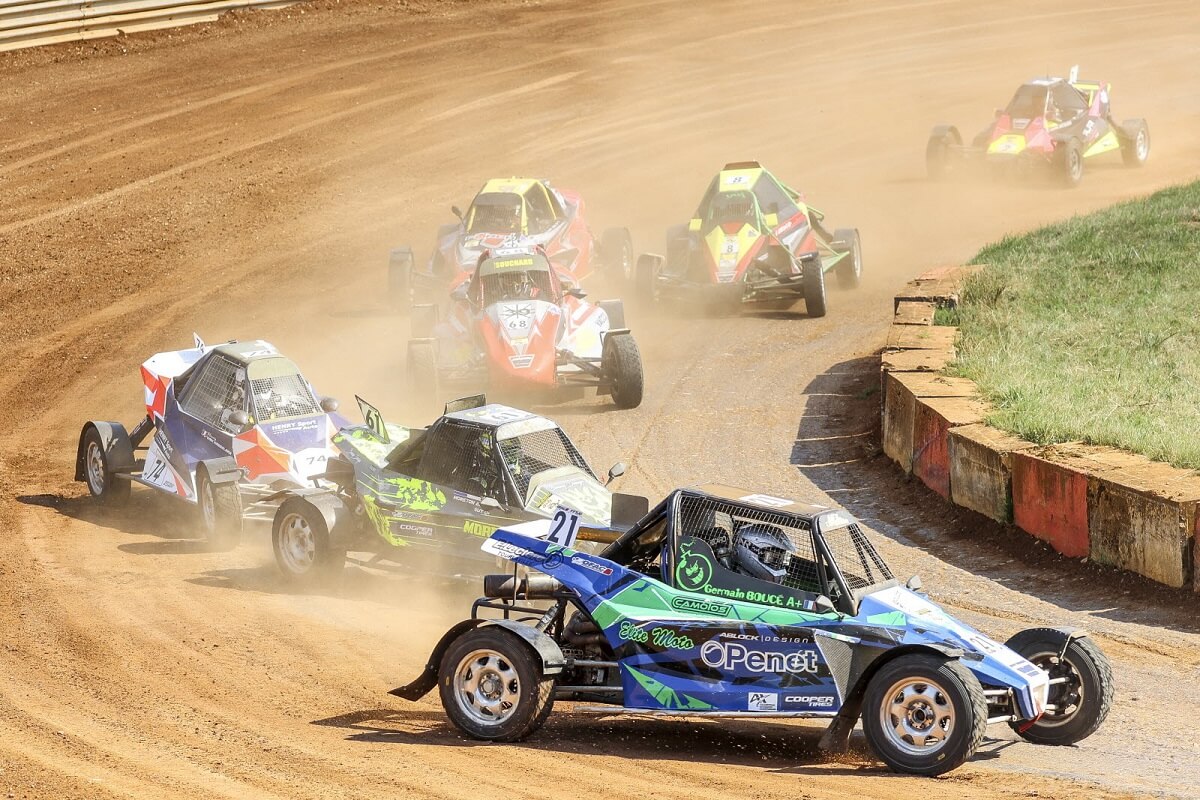
Autocross: from Barenton to Saint-Igny, the French saga!
In the United Kingdom, in the early 1950s, car clubs laid out small grass-and-dirt tracks in fields lent by farmers, where competitors would set off one by one to clock the best time: European autocross was born. The Taunton Motor Club organized the practice in 1954 with the first series of events, secured in 1959 the very first “British National Autocross permit,” then saw the ASWMC launch a regional championship in 1963, definitively establishing the discipline.
The French version truly took shape a decade later: in 1963, in Barenton (Manche), stock-car regulars kept the dirt and the mass start but banned intentional contact. This pioneering event—the first “clean” mass start on dirt—set an example: Bergerac, Ribérac, and Saint-Igny-de-Vers quickly adopted the concept, each creating its own kilometer-long ribbon of dust.
The FFSA took the discipline under its wing in 1971; four seasons later, it launched a French Championship won by Bernard Tridon (see photo below).
Throughout the 1980s, the paddocks filled with homemade chassis bearing the names Punch, Strakit, Fouquet, or Currien, while crowds gathered on the embankments; in 1982, the FIA turned the European Cup into a true continental championship. Six decades later, the original spirit lives on: many buggies still come out of family workshops, handcrafted before kicking up dust on the same bumpy straights where the discipline was born 👍

📅 A 2025 Calendar Spanning All of France
The 2025 French Auto-Cross & Sprint Car Championship will take place over ten weekends between April and October. It will kick off in the wooded clearing of Mauron (Morbihan, April 18–20), followed by a second round amid the pines of Saint-Vincent-des-Landes in Loire-Atlantique (May 10–11). Next comes Roussillon, on the fast dirt of Elne (May 24–25), then Alsace for the bowl of Steinbourg (June 7–8).
At the end of July, the caravan will stop in Vendée, on the slightly undulating track of Saint-Georges-de-Montaigu (July 19–20). It will then climb back up the Pyrenees to the Béarn foothills of Aydie (August 2–3), return to the Auxois plain at Is-sur-Tille (August 16–17), and head into the Gironde pine forest at Faleyras (September 6–7).
The highlight of the season, also listed on the FIA European calendar, will be held on the rollercoaster track of Saint-Igny-de-Vers (September 19–21). Finally, the national grand finale will take place at the foot of Mont Ventoux, on the red dirt of Mazan (October 4–5).
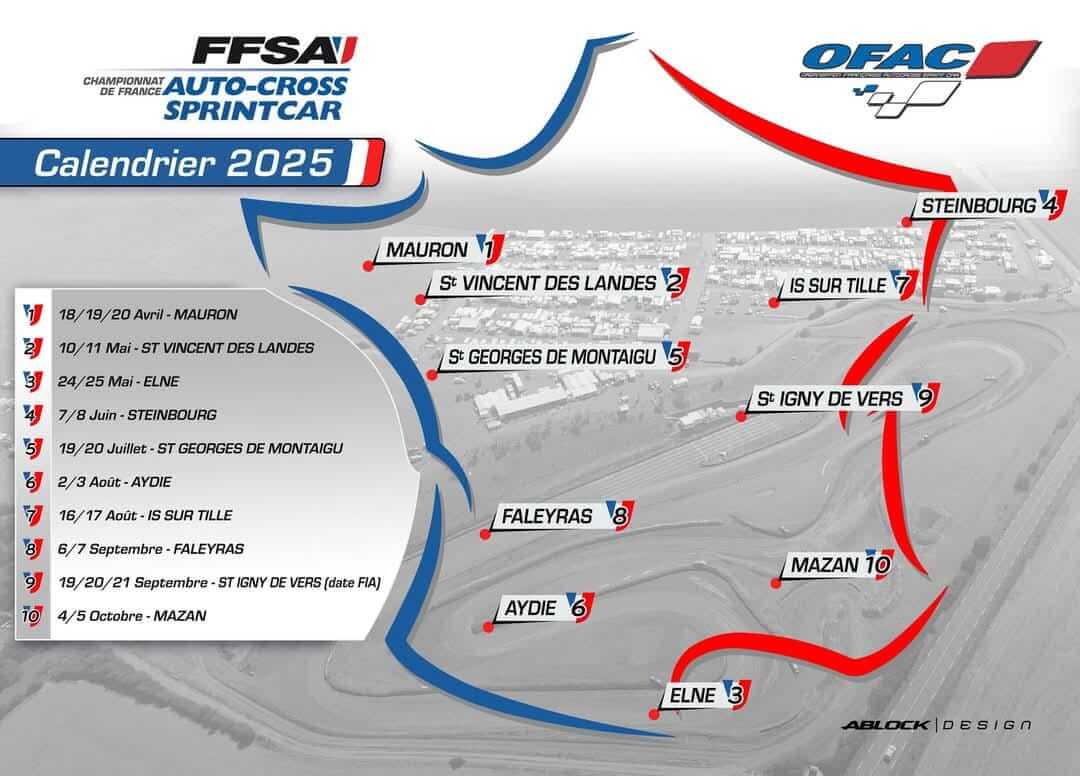
The Major Regional Championships
To these ten federal dates are added the major regional championships:
- CORAC (Challenge des Organisateurs Réunis d’Auto-Cross), covering the entire Southwest,
- SEAC (Sud-Est Autocross Challenge), anchored around the Rhône corridor,
- Challenge de l’Ouest for Brittany, Normandy, and Pays de la Loire,
- ORNEC (Off Road Nord Est Challenge), uniting the Northeast of the country.
With these regional series, the season totals more than 40 meetings: enough to offer enthusiasts an event nearly every weekend, from spring to the first autumn leaves 😋
That figure goes even higher if you look further afield: many drivers complete their FFSA program with UFOLEP races called “poursuite sur terre.”
ℹ️ The UFOLEP regulations adopt the main FFSA technical rules (the affinity federation aligns with the FFSA’s Technical and Safety Rules); the same cars or buggies can therefore compete without major modifications. Since these meetings are organized by local clubs, it is common to find races close to home, with lower entry fees.
The result: combining the national calendar, regional challenges, and UFOLEP, an enthusiast can find well over a hundred dates between March and October — plenty to keep those dirt tires warm almost every weekend! 😛
Inside the Rhythm of an Autocross Weekend
Weekends are very busy: Saturday begins with administrative and technical checks, followed by a two-lap warm-up to make sure everything is working properly. Next comes the timed practice session: each division is split into groups of up to ten cars, each with four flying laps to set its best time ⏱️
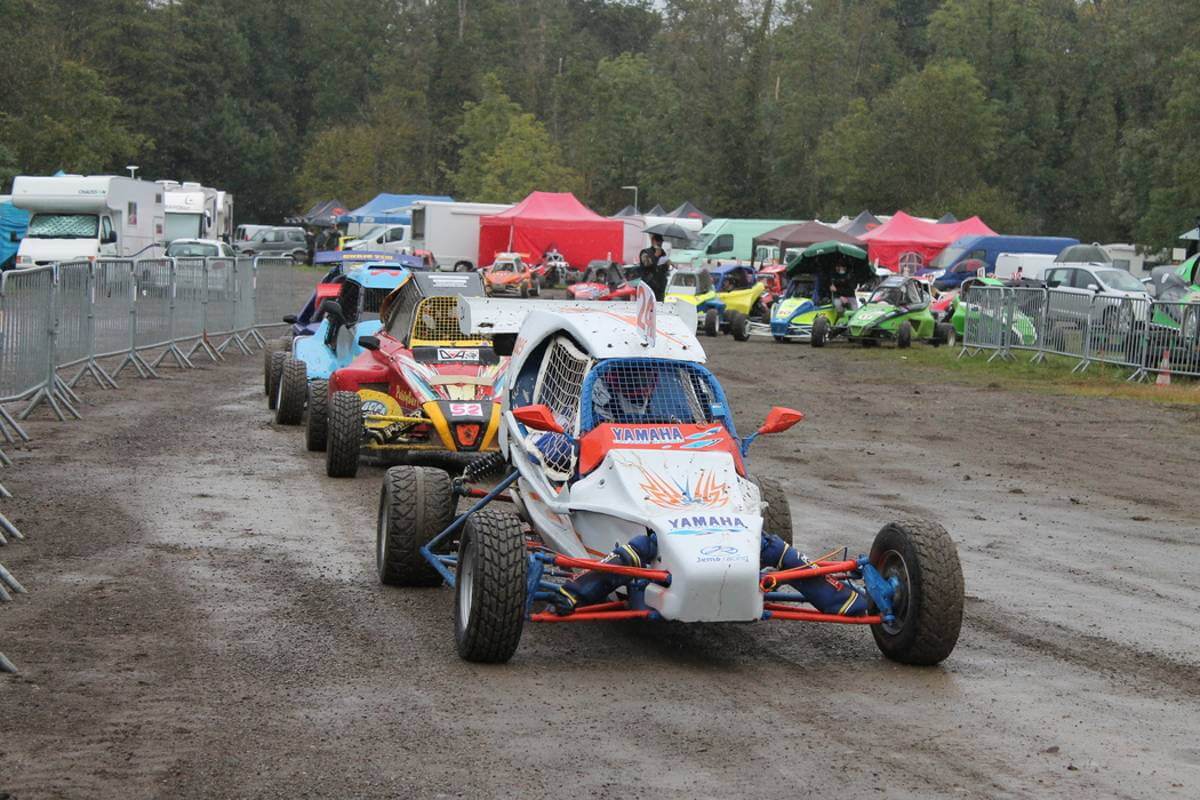
The ten highest-ranked drivers in the championship meet in a “priority” group. At the end of qualifying, each competitor’s best lap determines the starting order for the first heat (in case of a tie, the second-best lap is used).
The afternoon features the first and second qualifying heats, each contested over five laps. Sunday morning, the third heat starts at 8:30 a.m. The points accumulated over these three heats determine the 30 qualified drivers, who are split into two six-lap semi-finals. The top 7 from each semi-final plus an eighth selected driver (the best of the non-qualifiers) advance to the final.

The grid follows a 3-2-3-2 pattern: three cars on the front row, two on the next, and so on for four rows, making up to 15 starters. The poleman picks their position, and the others fill in the remaining slots. The finals featuring the top 15 drivers determine each meeting’s winners 🏁
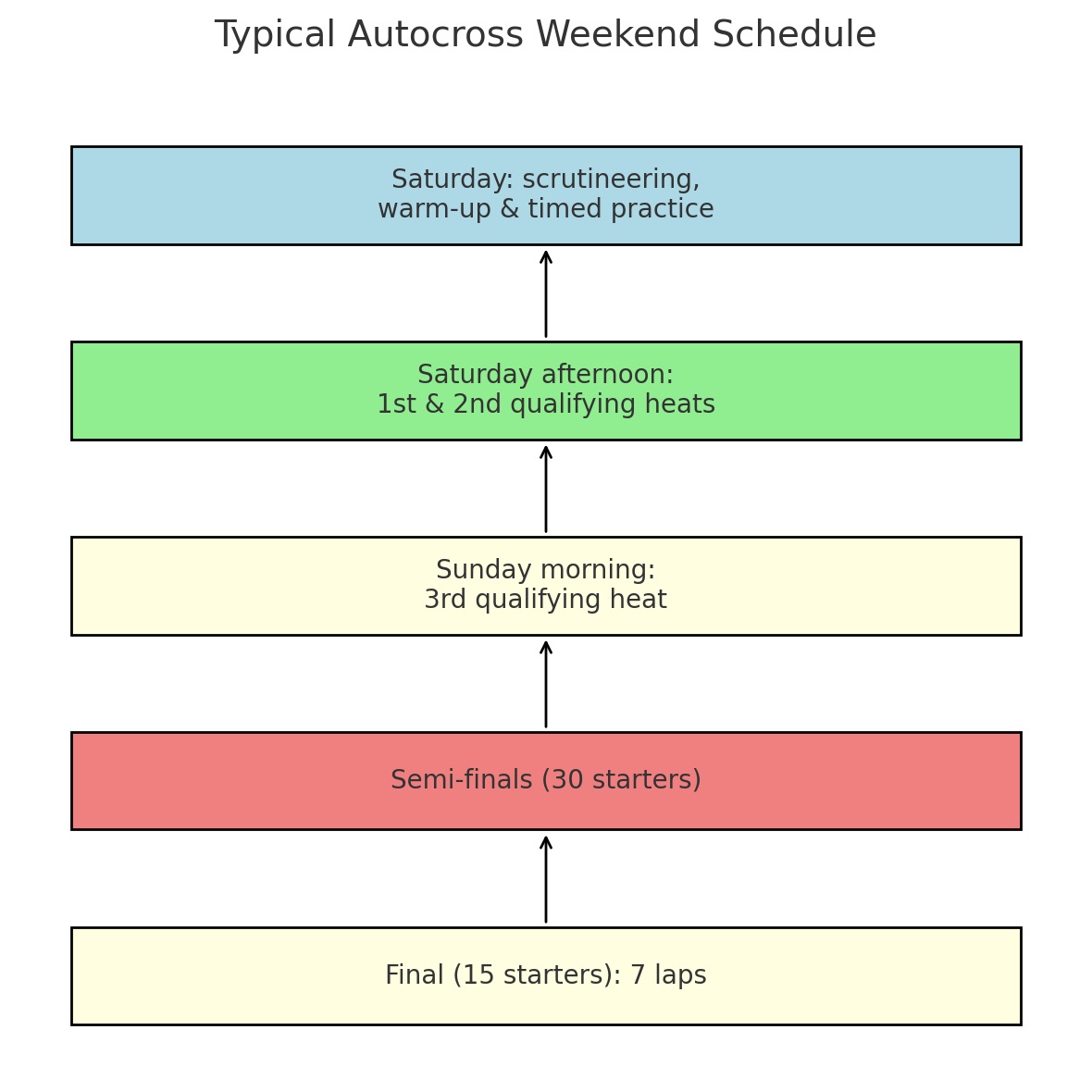
A Particularly Diverse Field of Vehicles
The Buggies: The Premier Category
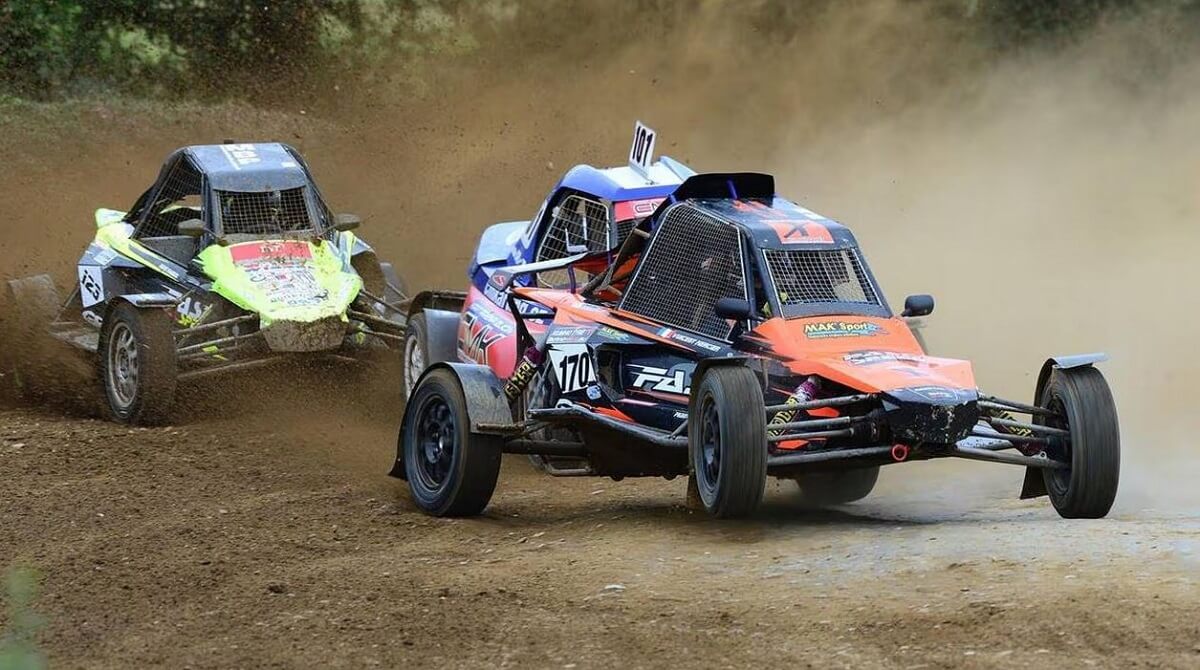
At the top of the bill sit the Super Buggies, long nicknamed the “Formula 1 of dirt.” Two setups coexist: a 1,601 to 2,000 cm³ engine mated to four-wheel drive, or a naturally aspirated/turbo engine over 2 liters, this time in rear-wheel drive.
The tubular chassis is entirely designed by the builder; the only constraint: a minimum weight that increases as engine displacement, turbocharging, or all-wheel drive are added (see table below). This relatively flexible framework allows for all sorts of daring designs: for example, twin motorcycle engine configurations (two Suzuki GSX-R 1000 units or similar linked to a shared gearbox)—a common solution, but far from the only one, as V6 or V8 touring car engines are also popular.
One notch below, the Buggy 1600 retains the same design freedoms but caps displacement at 1,600 cm³; thanks to its light weight, it loses only a few tenths per lap to the top category.
Even more accessible, the Junior Buggy class puts young talents aged 13 to 18 (FFSA regulations) behind the wheel of real little “rockets”: lightweight tubular chassis, around 600 cm³ naturally aspirated restricted engine, and reduced minimum weight. On the FIA scene, the age range extends up to 21, making it a recognized stepping stone to international competition.
Finally, the Buggy Cup (rear-wheel drive, car or motorcycle engine ≤ 2 liters) rounds out the ladder and offers an affordable entry point for those wishing to discover the discipline before investing in the more advanced categories 😉
The Touring Cars
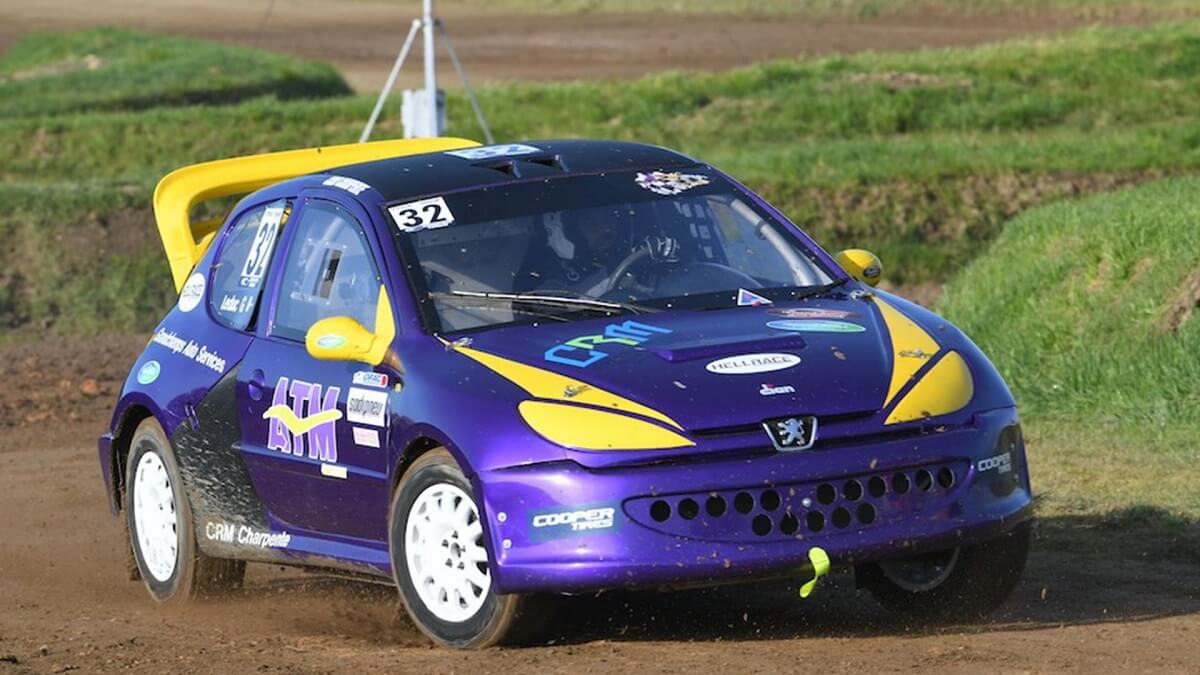
Alongside the single-seaters, French autocross maintains two divisions based on heavily modified touring cars.
- The Touring Cup requires front-wheel drive and limits displacement to 2 liters.
- The Maxi Touring frees up displacement (over 2L or 2L turbo) and authorizes all-wheel drive, as long as the corresponding minimum weight is respected (see table below).
These cars compete in their own series; they therefore do not share the track with the buggies. Their familiar silhouettes line up on the same tight starting grid, ready to trade paint in the dust 💥
The Sprint / Cross Cars: The Lightweight Path
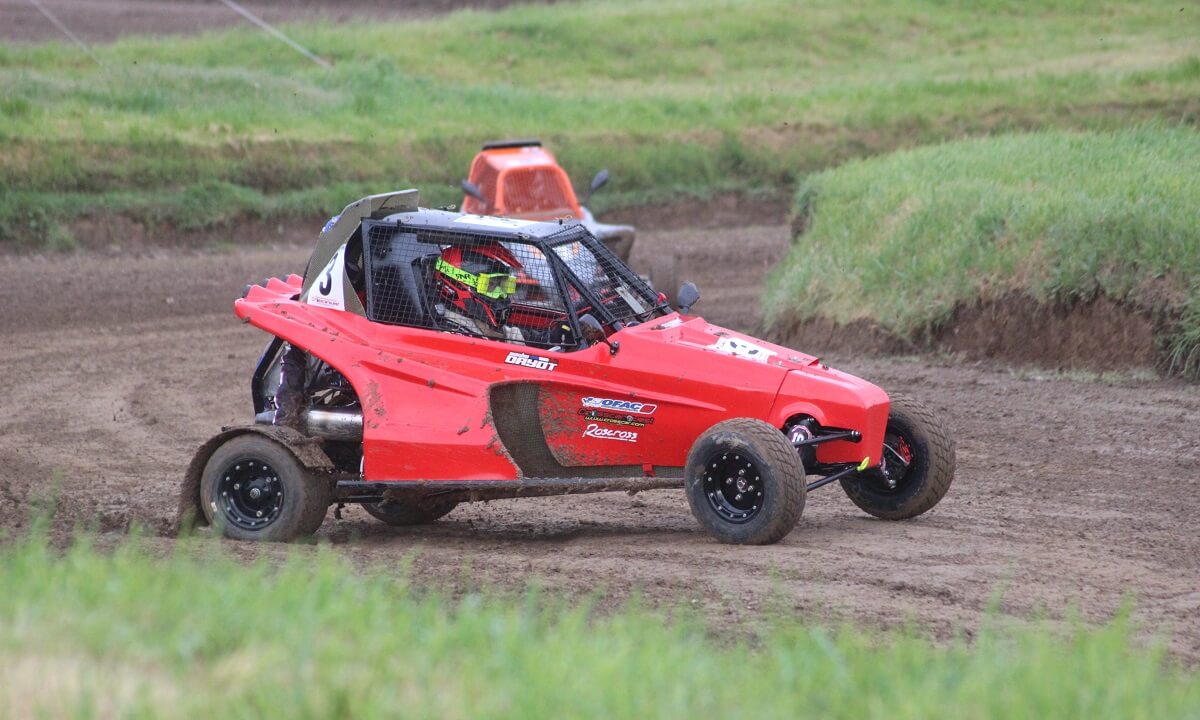
With a chassis weighing around 300 kg empty and a motorcycle engine mounted just behind the seat, Sprint Cars (Cross Cars in FIA terminology) round out the picture. The FFSA distinguishes four levels:
- Junior Sprint – Kawasaki ER6 650 cm³ restricted (~50 hp), from age 12.
- Maxi Sprint – the same ER6 (or Yamaha MT-07) unrestricted (~72 hp).
- Super Sprint – 600 cm³ hypersport four-cylinder or 850 cm³ MT-09 three-cylinder, around 125 hp.
- Sprint Girls – Super Sprint technical regulations, 100% female grid.
Their power-to-weight ratio catapults these little tubes off the line as soon as the lights go out; the FIA has made them the basis of its Cross Car Academy Trophy (ages 13–16), proof that they have become the first step of the international off-road ladder.
See also: "Buying a Kart Cross (new or used): how much does it cost?"
Autocross: A Playground for Everyone, From Amateur to Professional
From the high school student starting out in Junior Sprint to the artisan engineer mastering a Super Buggy, everyone finds in autocross a playing field suited to their budget, talent, and desire for wheel-to-wheel drifting. It’s this variety—high-spec prototypes, touring car silhouettes, lively kart-cross—that makes the French dirt come alive almost every weekend from March to October 🎉
Behind the Scenes: When Garages Become True Laboratories
On a homologation sheet, the requirements look austere: FIA roll cage, six-point harness, extinguisher, master cut-off switch, towing hooks, and a technical passport checked at each meeting. Once these safeguards are met, the imagination can run wild. For example, the front end of a buggy may be built in a woodworking shop in Périgord, while the rear cradle comes from a machining workshop in Toulouse; one builder pairs a Suzuki Hayabusa four-cylinder with a Polaris RZR gearbox, his neighbor mounts two BMW flat-twins back to back, another resurrects a venerable V6 to enjoy nearly diesel-like torque 🛠️
This technical freedom fuels the paddock atmosphere: people talk just as much about tube thicknesses, reinforcements welded the night before, ECU mapping salvaged from a track bike, as about lines through the morning hairpin. Ideas circulate from awning to awning, tested in the next heat, and you rarely see two identical buggies on the starting grid. It’s this freedom—carefully framed by safety regulations but open to mechanical creativity—that explains the unique vitality and diversity of French autocross 🙂
On the European Scene: A 100% Buggy Field Where the French Remain at the Front
When the FIA transformed its European Autocross Cup into a full championship in 1982, France quickly came to the fore: Jean-Paul Vincendeau racked up three Super Buggy titles in the late 1980s, Francis Warnier succeeded him in 1990, and Fabrice Morize even took a Peugeot 205 T16 to the Touring title in 1992 🏆
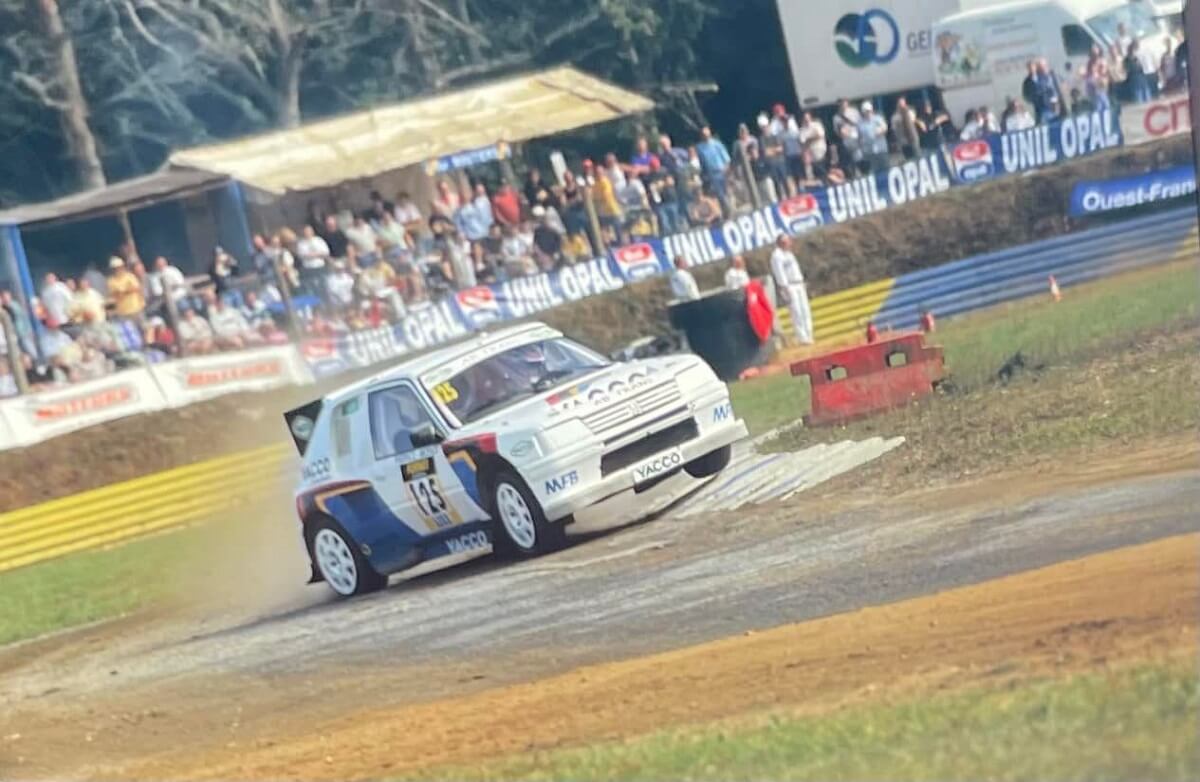
Over the seasons, however, closed cars gave way to prototypes: lighter, easier to transport, less demanding in parts, buggies eventually reigned supreme. The continental grid then stabilized around three divisions—Super Buggy, Buggy 1600, and Junior Buggy—to which the FIA added in 2021 a European Cross Car Championship and the European Junior XC Cross Car (ages 13–16).
Despite the statistical dominance of Czech and German schools, the French continue to add their names to the roll of honor. A few examples:
- Florent Tafani: European Buggy 1600 champion in 2016, then the first Frenchman to win the Super Buggy title in 2021.
- Teddy Baudet: European champion in Division 3 in 2010, eleven years before Tafani.
- David Méat: triple European Cross Car champion (2019, 2021, 2023).
- Vincent Mercier: European Buggy 1600 champion in 2019.

[VIDEO] Super Buggy Final at Saint-Igny-de-Vers: It’s Intense! 🥵
What Really Sets Autocross Apart From Rallycross 🤔
At first glance, the two disciplines look related: mass starts, short heats, spectators close to the track. But their DNA differs in several key ways:
- The track: in rallycross, each lap alternates asphalt and gravel; autocross, meanwhile, stays 100% dirt—a living surface that ruts and compacts with each pass.
- Strategy: rallycross requires a joker lap (a longer detour) that each driver must take once per race, adding a tactical dimension. In autocross, there are no detours: everything hinges on the start and on-track battles.
- Grid density: rallycross grids five cars per heat (then eight in the final) on two rows arranged 3-2; autocross lines up to fifteen vehicles in four rows of 3-2-3-2, which changes the first-corner dynamics.
- Vehicle complexity: the top RX1 (ex-Supercar) class features 4WD cars with over 600 hp, built on chassis close to WRC; budgets follow suit and can reach several hundred thousand euros for a full season. In contrast, the Super Buggy—custom tubular chassis, free engine choice but regulated weight—achieves comparable power while remaining simpler to build and maintain; and the Sprint Car offers a much more affordable entry ticket.
- Media exposure: rallycross has enjoyed a world championship past (World RX up to 2023) and regular TV coverage; autocross mainly lives through regional media and word of mouth among enthusiasts, though the European championship draws a solid Central European following.
See also: "How to Get Started in Rallycross in France?"
In short, rallycross thrives on asphalt intensity and tactics, while autocross cultivates pure dirt drifting, construction freedom, and bigger grids. Two mindsets, two schools; everyone can pick the dust that suits them best 😉
Buying an Autocross Car or Sprint Car – How Much Does It Cost?
Giving a single price is impossible: each chassis comes from a different workshop, each engine has its own pedigree, and from one seller to another, the condition and the included spare parts can vary threefold. Still, it’s possible to sketch out some ballpark figures you’ll often see in classified ads.
- Super Buggy – On average around €35,000 for a competitive, race-ready machine; some older models go for about €20,000, while a very recent chassis with a top-spec engine can exceed €50,000.
- Buggy 1600 – Listings tend to cluster around €30,000; a top example can approach €40,000, but there are well-maintained first-owner cars around €25,000.
- Buggy Cup / Junior – The entry point for the category: suitable machines from €20,000. The very latest, barely used models can exceed €30,000.
- Sprint Car / Cross Car – The range is wide: first steps from €3,000 for a training chassis, “club” machines around €6,000, recent models around €15,000, new examples above €20,000.
- Touring Cup and Maxi Touring – A very open scale: you can find a running car under €15,000, but a four-wheel-drive build with a big engine quickly costs as much as a well-developed Super Buggy.
➡️ See all off-road race car listings on GoToTheGrid 😋
ℹ️ These amounts cover only the purchase of the vehicle; you also need to budget for driver equipment, tools, consumable parts, entry fees per race, and of course the appropriate FFSA license. It’s then up to each person to pick the category that fits their wallet… 🤑
A Small Vocabulary Note
In Europe, autocross means a mass-start race on a 100% dirt track. In the United States, the same word refers to a timed slalom on asphalt, run one car at a time between cones (the “SCCA Solo” discipline).
If you’re speaking with English speakers, be sure to specify “European autocross” to talk about the off-road version presented here and avoid any confusion.
Conclusion
A season of autocross in France means around forty events spread from April to October, dirt tracks that change with every lap, and paddocks where you’ll see a Sprint Car, a 206 Maxi Touring, and a Super Buggy built for Europe all lined up together 😎
The spirit remains the same as in the early days: you turn the wrenches yourself, compare tube thicknesses between heats, and meet up afterward for the awards ceremony. Whether you come for a few regional rounds or to chase a continental title, you share the same grid, the same dust, and the same handshake at the finish. It’s this simplicity—in both the mechanics and the human connections—that keeps autocross alive and well, six decades after the first start on a Manche pasture 🥰



